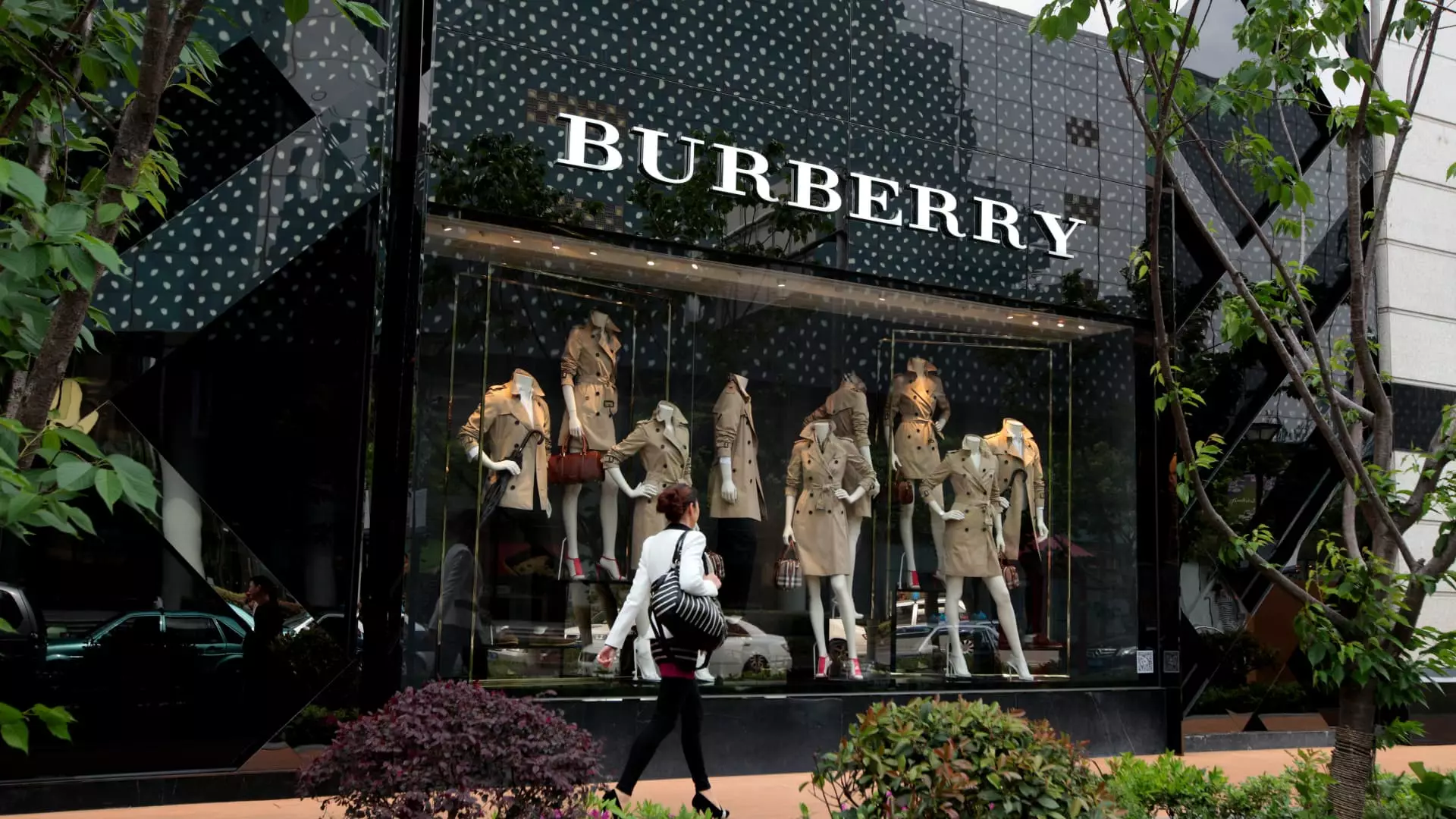The luxury fashion industry is not merely about high-end materials and elite clientele; it is a space defined by brand loyalty, heritage, and recognition. Burberry, the iconic British fashion house, stands at a critical juncture as it grapples with declining sales and an increasingly competitive market landscape. Recognizing the urgency of the situation, new CEO Joshua Schulman has embarked on an ambitious reform plan dubbed “Burberry Forward.” This initiative seeks to reconnect the brand with its quintessential roots and reinvigorate consumer interest by emphasizing its longstanding designs and hallmark products.
The unveiling of the “Burberry Forward” strategy signals a significant pivot for the company, which has seen its stock plummet by nearly 39% over the year. Investors are responding positively, evidenced by a startling 22% surge in stock prices following the announcement. Schulman articulates a vision centered on refining product selection and returning focus to the elements that traditionally defined Burberry—a move that analysts deem crucial amidst reports of substantial quarterly losses.
Schulman emphasizes that the brand has gradually drifted from its core offerings, catering to niche markets at the expense of its essential pieces such as coats and scarves. Through this strategic realignment, Burberry aims not only to stabilize its financial footing but also to kindle a renewed desire for its products in the luxury market.
Burberry’s struggles are not occurring in a vacuum; the broader luxury goods market is experiencing a contraction, with a projected 2% decline this year. This backdrop intensifies the scrutiny on Burberry as it outlines its action plan to counter sluggish sales and forge a pathway toward sustainable growth. Analysts have frequently highlighted Burberry’s organizational dysfunction, reflecting on the failed attempts of previous CEOs to navigate the brand through turbulent waters.
Piral Dadhania from RBC Capital Markets articulates a sense of anticipation regarding the newly proposed focus on heritage and outerwear, positing that this direction instills a sense of authenticity that can set Burberry apart in a crowd of competitors. With many luxury brands diversifying their offerings, returning to a heritage-centric approach could provide Burberry with differentiation in an overstaturated marketplace.
Schulman’s takt is described as urgent and necessary, seeking both immediate and long-term improvements. This strategic realignment is likely to touch various aspects of the brand’s operations—ranging from product design, assortment, pricing, to distribution channels. Analysts predict that these shifts must retain Burberry’s global luxury positioning while enticing design innovation that captures the attention of modern consumers.
The discussion surrounding Schulman’s alignment with the creative vision of Burberry’s design team poses an interesting intersection of business acumen and artistic expression. Observers note that successful execution will hinge on his ability to synthesize his strategies with the nuanced and often emotionally driven narratives that define fashion collections.
Investor sentiment mirrors market anticipation for Burberry’s revitalizing strategies, with firms like Bernstein and HSBC upgrading their ratings on the brand. This momentum signals faith in Schulman’s vision and an acknowledgment of the potential for recovery. As Burberry embarks on this journey, it faces not only internal challenges in terms of aligning leadership perspectives but also the external pressures of evolving consumer preferences and market dynamics.
Analysts such as Mamta Valechha from Quilter Cheviot regard Schulman’s approach as a significant turning point for Burberry as it has been maneuvering through a bleak chapter in its history. Fresh direction could combat years of stagnant growth and the critical perception of brand identity dilution.
As Burberry steps decisively into its “Forward” chapter, the landscape of luxury fashion continues to evolve rapidly. The emphasis on heritage, coupled with a reinvigorated connection to core products, forms a strategic roadmap that could spell rejuvenation for the brand. While the challenges ahead are formidable, the potential to reclaim a prominent position in the luxury market will depend heavily on internal alignment, consumer engagement, and a coherent expression of the brand’s storied legacy. The coming months are set to reveal whether Schulman’s course correction is merely a temporary boost or a sustainable renaissance for Burberry.

